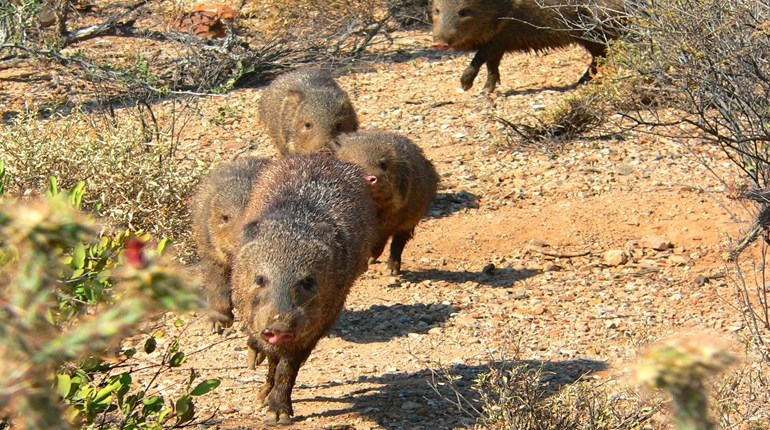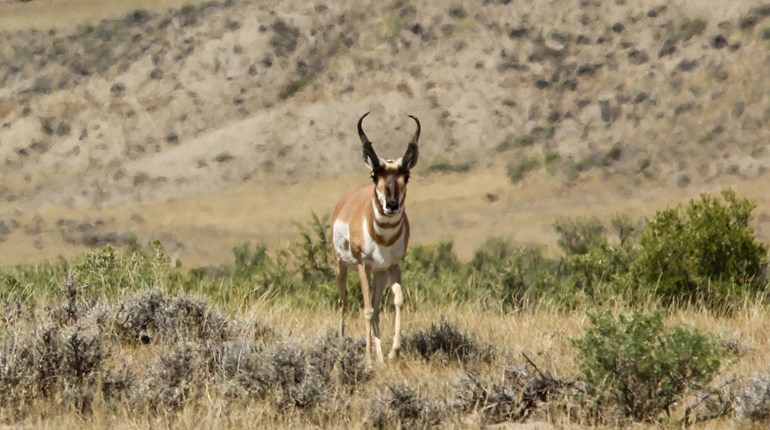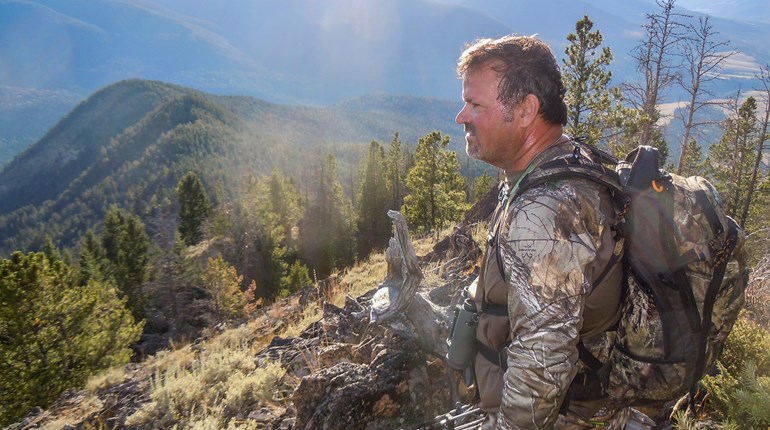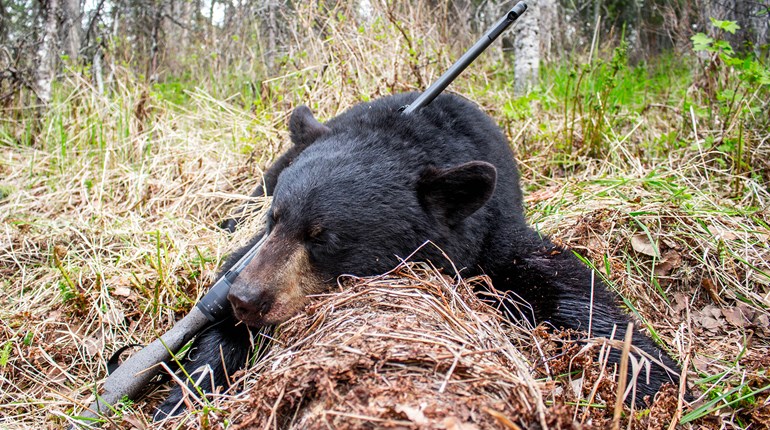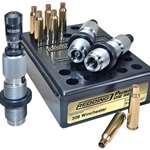
As American hunters, we're blessed with incredible hunting opportunities. Wherever we hunt, we have a wonderful array of possibilities when pursuing big game. Each offer unique challenges and have varying degrees of wariness, but when you look closely at all the big-game species in North America and weigh all the factors required to tie your tag to that animal, I'd vote for the pronghorn antelope as the easiest to hunt. Here's why.
First, the downside. Pronghorn only inhabit the Western states. If you don't live in the region, you must travel to where they live. Another downside: You must draw a tag in a lottery to hunt them, though there are exceptions that I'll address later. Pronghorn are one of a kind, pure North American and found nowhere else.
Pronghorn are almost never solitary, but live in herds. Exceptions are bucks looking to breed during the rut and does off by themselves having their fawns. Herd sizes vary during hunting seasons, from half a dozen animals up to several dozen. In the winter, they gather in large herds and may number upwards of 1,000 or more.
One of the reasons they get my vote as the easiest species to hunt is the open country they live in, making them highly visible from long distances—pronghorn are seldom found in cover. Their primary escape strategy is to run from a threat—and they can run. They've been clocked at top speeds of 60 mph, making them the fastest animal in America. Nothing can catch them when they're running flat out—except a bullet. There's a good reason why they prefer the open prairie and sagebrush expanses rather than brush and timber.
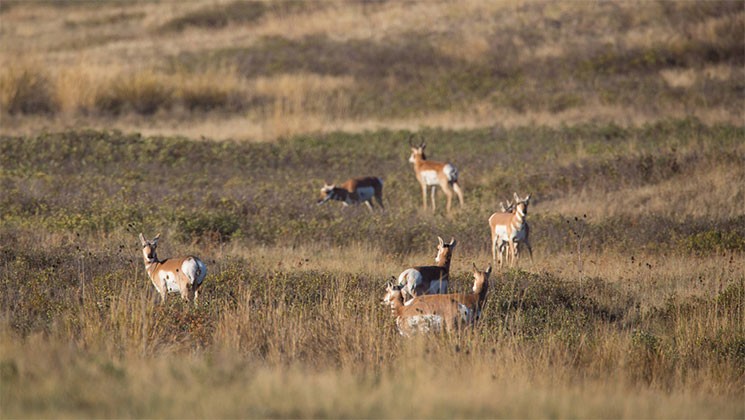
They have amazing long-range vision, making their eyes their greatest defense. For that reason, they prefer uninterrupted visibility. When pronghorn perceive danger, they outrun their enemies. Another peculiar factor that allows them to survive in the open is their unique fur. Each hair is hollow, proving maximum insulation from freezing gale force prairie winds and blizzards. These tough animals don't seek shelter as others do, but meet the perilous weather head-on. All this adds up to a quarry that's readily easy to spot in their open country landscape, especially when the sun is low in the sky and they shine like beacons. But seeing them at a distance doesn't mean you can easily get a shot—or does it? Before answering that question, you must consider their boldness and elusiveness when hunters are in their world.
My first antelope hunt was in Utah 40 years ago, back when drawing a tag was akin to hitting the super lotto. I hunted one of the top units in the state, and quickly learned that pronghorn were Houdinis at hiding and keeping their distance. When my pickup truck rounded a bend, I'd often see a cloud of dust about half a mile away. The dust was a bunch of antelope busting out of there pronto, never to be seen again. Finally, on the last day of the season I blundered into a small buck with half a dozen does. I wasn't the least bit disappointed at his small horns, and wasted no time taking the shot. During the decades that have passed since that hunt, I've taken around 30 bucks. I believe that little guy was the smallest of the lot, and I never had any regrets.
Having said that, I've encountered countless bucks that were perfectly willing to watch me from distances of 20 to 500 yards or more away. Some were bedded, some just stood there. Here's how I took my last three bucks. One was with a herd of does 300 yards away. He was in rolling country, and I made a stalk, unseen, staying out of sight until I was 50 yards away. I made a successful shot. Another was fooling with a bunch of does, tearing back and forth across a sagebrush flat. I set up on my shooting sticks and waited until he took a breather. I shot him at 100 yards. The other buck was bedded; he stared at me too long, and I took him at 40 yards.
These were easy opportunities, but I'll stop short of saying that they're all that easy. Indeed, I've pursued pronghorn all day and never got a shot, though I personally draw the line when it comes to long-range shooting. I've dropped a couple bucks at 400 yards, but my preference is to stalk as closely as possible, sometimes crawling in a cactus infested gully or draw. To me, the biggest challenge is getting close. As you can imagine, there are all sorts of opportunities if you're into long-range hunting.
Many of the pronghorn you see will be running, and some hunters will try a shot. I say "try" because very few people can consistently hit an animal running at 40 to 60 mph, especially when the pronghorn are weaving and bobbing up and down over uneven terrain. In my opinion, and that of most hunters, it’s unethical to shoot at running animals. Most of the time the hunter misses, once in a while an animal is hit in the vitals, but sometimes the quarry is wounded.
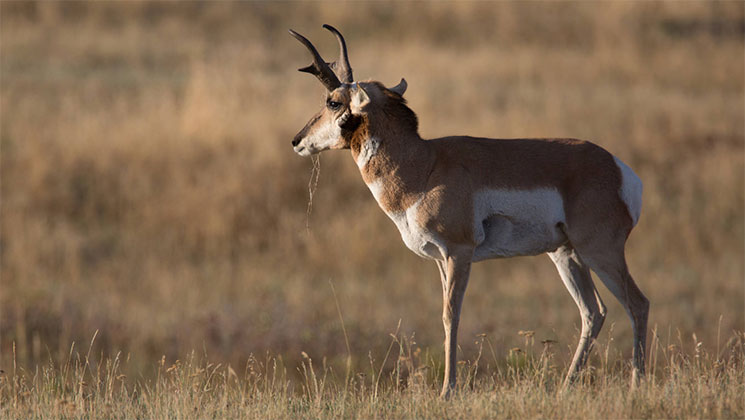
Pronghorn Hunting Strategies
There are a number of antelope hunting strategies. Typically, a hunter drives the prairie, spots a distant herd, gets out of the vehicle after driving it out of sight, and makes a stalk to close the distance. Driving is mostly done in big country where animals are sparse and much ground needs to be covered. Many hunters prefer to hike all day, carrying plenty of water, food and gear. Interestingly, pronghorn are not fond of jumping fences, which are typically two or three strands of barbed wire a couple feet off the ground. I've seen them jump, but very rarely. Instead, they'll run along a fence until they find a spot where the lowest strand is high enough off the ground to allow them to dash under, or they'll cross at an open gate or any place where the fence is in disrepair and they can easily hop across. Hunters who know the country will often set up at a favorite crossing and wait.
Pronghorn typically drink every day, therefore hiding near a waterhole is an effective strategy. This is especially true for bowhunters who need a close shot. Another strategy is using a decoy during the breeding season, which is mid-September to early October in most regions. The decoy must be a buck, not a doe—the smaller the buck, the better. It works incredibly well. Buck antelope will typically come charging in when they spot it.
Hunters who want exceptional bucks are often stymied by the configuration of the horns. Many horns curve inward at the top, giving the appearance of a heart. It's the curve that confounds inexperienced hunters. Many so-called 15-inchers have been shot, only to have suffered ground shrinkage when the hunter approaches and discovers that their buck only measures 13 inches.
A huge plus for pronghorn hunters is the vast expanse of public land and comparatively easy access. Most animals inhabit public land administered by the Bureau of Land Management, which has 270 million acres of land in the United States. There are millions of acres of BLM land in the major antelope states where you can drive or hike all day and never see a posted sign.
Choosing a state depends on your expectations. If you want a really big buck, odds are best in Arizona and New Mexico, but tags are tough to draw. Having said that, you can find good bucks everywhere. A look at the Boone and Crockett book will reveal which areas produce the biggest trophies. Wyoming is by far the top state for numbers of animals and the best chances of drawing. Some units are undersubscribed, and buck tags can be bought over the counter during most years. It's said that Wyoming has almost as many pronghorn as citizens, with a herd numbering more than 400,000 animals. Wyoming has more than 18 million acres of BLM land, Colorado and Montana have more than 8 million acres each. These are among the top antelope states. Many others have staggering amounts of public land. The U.S. Forest Service, federal refuges and state lands also offer much public access for antelope.
Another reason why I claim they're easier than other big-game species: harvest statistics are phenomenal. It's not uncommon for hunter success to be close to 100 percent or better, when hunters take a doe in addition to a buck.
Given the advantages of seeing lots of animals and the vast public lands they occupy, pronghorn are perfect quarry for newcomers to hunting, or simply those who want a fascinating hunting experience. The Western prairie has a natural beauty found nowhere else in North America, and its unique pronghorn antelope are always a thrill to see, whether you have a hunting tag or not.












